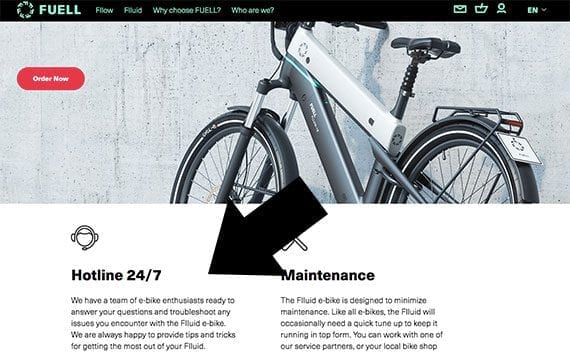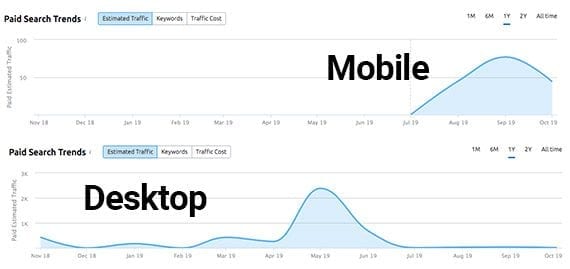A SWOT analysis — strengths, weaknesses, opportunities, and threats — can help an ecommerce business improve its marketing, find new ways to promote its brand, and avoid competitive threats.
Listing a business’s marketing strengths and weaknesses, however, may not be enough to provide actionable insights or help the company’s marketing staff make decisions.
There are some things you can do to make your SWOT analysis more helpful, including selecting your competitive set with care, identifying patterns in how those companies market, and learning how a strength or a weakness overlaps with opportunities or threats.
Listing a business’s marketing strengths and weaknesses, however, may not be enough…
Tip 1: Carefully Select Competitors
An ecommerce company’s marketing strengths and weaknesses should be considered relative to its competitors. You cannot say your company is outstanding at email marketing if you don’t know how your competitors use it.
But which competitors should you consider? If your company sells workout clothing for expecting mothers, for example, should you consider Amazon or Gymshark or both as competitors? Both sell workout clothing. But do they impact your niche?
At the time of writing, Gymshark didn’t have a maternity line. But the company does an amazing job of marketing its workout clothes. So while you might not want to consider Gymshark as a competitor when you are listing your business’s relative strengths, you may consider it when you look for marketing opportunities.

If you sell maternity workout clothes, Gymshark may not be a direct competitor, but you can draw insights from how it markets a similar product to similar consumers.
You probably would not include Amazon among your competitors. It is as much a marketplace as a retailer, and it carries lots of other products. Thus it would be difficult to analyze its marketing.
On the other hand, you should likely consider Blanqi, which sells maternity workout gear specifically, for all four areas of your marketing SWOT analysis.

A company selling a similar product in a similar price range is just the sort you want to analyze. Understanding how your marketing tactics and performance compare to that competitor will help yours improve.
So do two things when you select the competitors to consider for your SWOT analysis.
- Be certain they are a close match to your niche. If you sell high-end maternity workout gear, compare your business to similar retailers.
- Not every competitor fits all aspects of a SWOT analysis. Gymshark may help you identify marketing opportunities but might not be the standard for identifying strengths or weaknesses.
Tip 2: Identify Marketing Patterns
Aimlessly perusing a competitor’s website or casually reading the company’s Facebook posts probably won’t provide the insights you need for a SWOT analysis.
Instead, look for patterns a competitor’s marketing or that show up across all competitors.
For example, an electric bike brand noted that competitors with even one physical location tended to promote test rides and low-cost bike rentals in their email messages, while ecommerce-only brands tended to promote their customer service and relatively better warranties. This insight generated ideas for new marketing opportunities.

Fuell sells its electric bikes online and offers around-the-clock support.
Similarly, using the competitive research tools in SEMrush, this same electric bike company noticed that one of its competitors had different patterns for its mobile pay-per-click advertising versus desktop. With a bit more research, the brand was able to identify a few strengths relative to this particular competitor.

According to SEMrush data, this competitor had more traffic from desktop PPC ads in the summer. In the fall, most of the PPC traffic came from mobile.
Tip 3: Don’t Stop with a SWOT Grid
Often a SWOT analysis will result in a simple two-by-two grid. Each quadrant may offer insights, but it may not be clear how strengths interact with threats or how weaknesses impact opportunities.
| STRENGTHS | WEAKNESSES |
| We have 1.25 million email subscribers, which gives us a powerful tool to reach customers. We have more than 11,000 positive customer reviews on our site. These reviews show up on Google. | We depend very heavily on magazines and print ads to drive sales. We are not getting many new email subscribers, with subscription rates dropping 25% in the past year. |
| OPPORTUNITIES | THREATS |
| Expand our social media marketing. Add new product lines for postpartum mothers and women whose children are older. | Major workout-wear brands are entering the maternity market. Magazine readership is down significantly, so it is become more difficult to get new customers. |
To gain more insight, try what some business managers call “threats, opportunities, weaknesses, and strengths” analysis (TOWS). Note the clever reversing of word order.
A TOWS analysis organizes strengths and weaknesses based on how those traits interact with a company’s opportunities and threats. As with a SWOT review, list all of your company’s strengths and weaknesses.
Next, divide your strengths into two categories.
- Strengths that create opportunities.
- Strengths that stave off threats.
Split your list of weaknesses into two categories, too.
- Weaknesses that hinder opportunities.
- Weaknesses that amplify threats.
When you plot your strengths and weaknesses on the grid, they will overlap with opportunities and threats.
| OPPORTUNITIES | THREATS | |
| STRENGTHS | We have 1.25 million email subscribers, which gives us a powerful tool to reach customers. Thus, we may be able to expand into new markets, such as promoting postpartum workout gear to new mothers. The aim would be to encourage women to trust our brand throughout life's various cycles. | Our 11,000 positive customer reviews is a powerful hedge against other brands entering the maternity workout wear market. We know from customer research that touting these positive reviews often helps win a sale. |
| WEAKNESSES | We are not getting many new email subscribers, with subscription rates dropping 25% in the past year. Given the importance of our email marketing list for new product launches, we need to ensure that we have a steady stream of potential customers subscribing. | We depend on magazines and print ads to drive short-term sales. As magazine readership shrinks, we need to find new advertising mediums. |
The resulting quadrants have different priorities and should indicate different actions.
- The top-left quadrant, where strengths intersect with opportunities, should represent marketing advantages. Capitalize on these.
- In the top-right quadrant, you are playing defense. These strengths are defending your position in the market. Watch these carefully, but don’t change anything at present.
- The lower-left quadrant indicates concerns. If you don’t correct, you may not be able to take advantage of the opportunities in the square above it.
- The lower-right quadrant indicates significant problems. Correct those.
A regular SWOT (or TOWS) analysis can help your marketing team make improvements with your communications, advertising, or any other promotional aspect.




